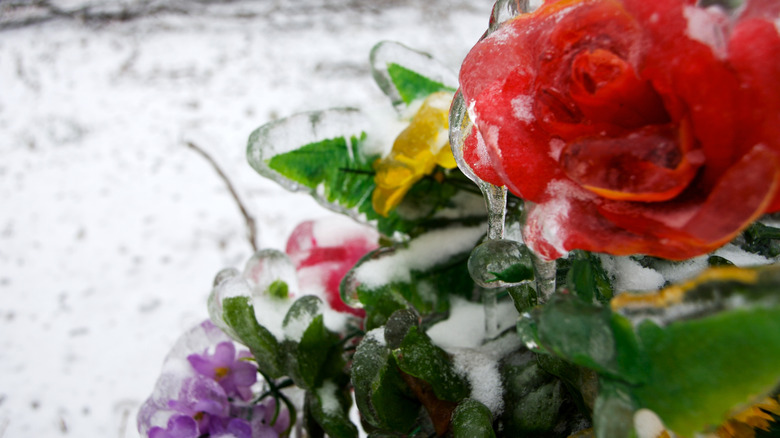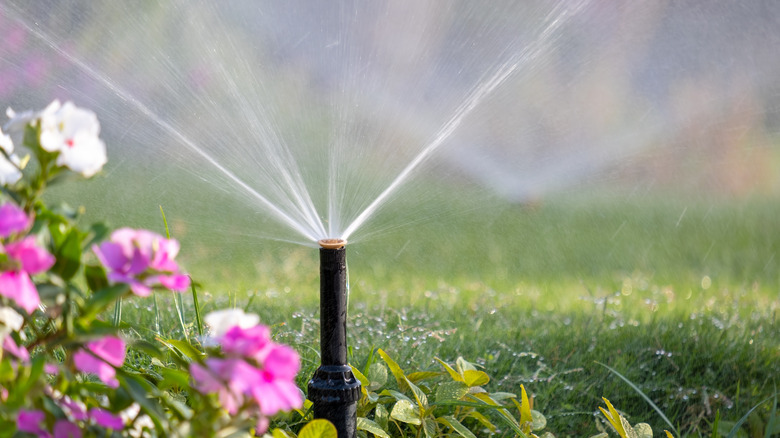Turn On Your Sprinklers Before The Next Frost, And Watch The Magic Happen To Your Flowers
It might seem counterintuitive that turning on your sprinklers is one way to protect your plants from frost. Increasing the amount of ice on your flowers seems like a perfect way to kill them, but just the opposite is true. It won't work in a deep freeze, where the plants' cells freeze and die, but you can prevent a light frost from damaging or even killing your flowers by letting your sprinklers keep a continuously freezing amount of water covering them. How does that work? When a plant's cells freeze during a frost, the frozen molecules of water inside the cells expand and break the cell walls, killing them. The key to preventing frost damage is to stop the plant's cells from freezing by insulating them.
Cold is the absence of heat. Your refrigerator works not by sending cold air into the refrigerator's box but by removing heat from it. The same thing happens when your sprinkler coats your flowers with water. At 32 degrees Fahrenheit, water freezes on a plant's surface and heat moves from the water to the surface of the plant. In the same way that warm air comes out of the back of your refrigerator, heat is transferred from the ice to your plants. As long as there is continuous freezing of water on the plant, the plant's surface remains at about 32 degrees. In short, the water freezes, but the plant doesn't.
How to use your sprinkler to prevent frost damage
The key word is "continuous." Your sprinkler needs to be running frequently enough for there to be continuous heat transfer from water to plant. If you notice that the ice crystals on the plant's surface are turning a milky white, it's time to turn your sprinklers back on. You should be able to see a small amount of water continuously dripping off the ice crystals. If not, turn the sprinklers back on as soon as possible. You don't need continuous blasts of water, so learn how to fine-tune your sprinkler system to apply a frequent mist to keep your plants continuously wet.
Using a sprinkler to prevent frost damage doesn't always work. If the dew point outside is very low and the air is dry, water will evaporate from the plant's surface into the atmosphere, leaving your flowers unprotected. If it's windy out and very cold, the same thing happens. And if it's just too cold, there's not a lot you can do. Generally speaking, using a sprinkler to protect your plants works when the temperature is between 24 and 32 degrees. If it gets below that, you should have already winterized your sprinkler system.
If a frosty night follows warm daytime temperatures, start your watering early. Likewise, if a frosty night is to be followed by a warm day, keep your sprinklers running in the morning even after the threat of frost has passed. It might seem counterintuitive to cool down your plants after a hot day in order to prevent frost, or to keep them cool before a warm day, but the key is stability. Rapid swings in plant cell temperature are what burst those cells, so gradual changes in temperature are what keep them alive.

